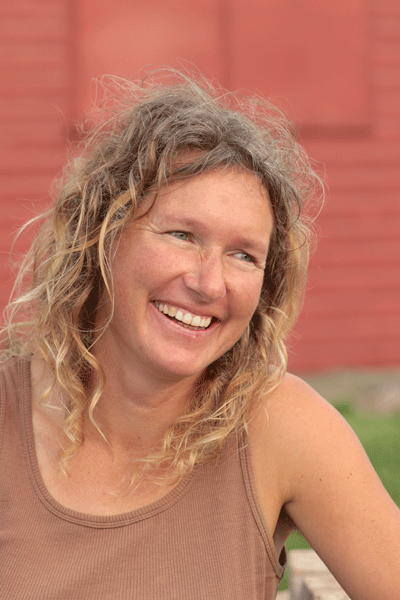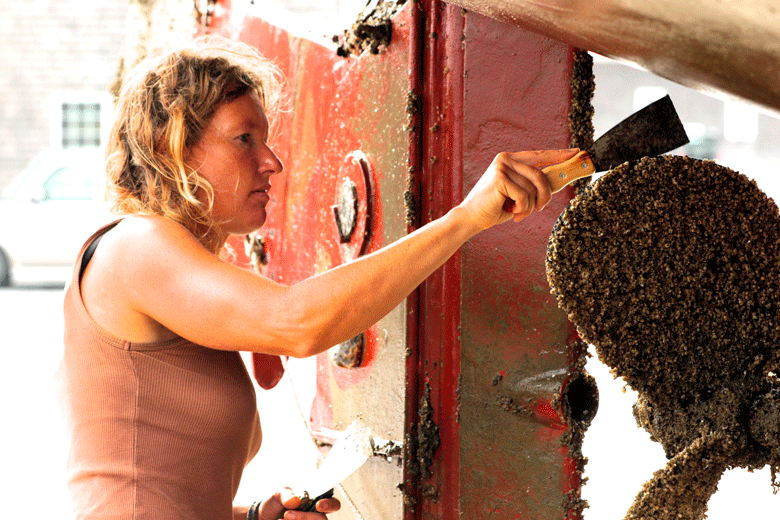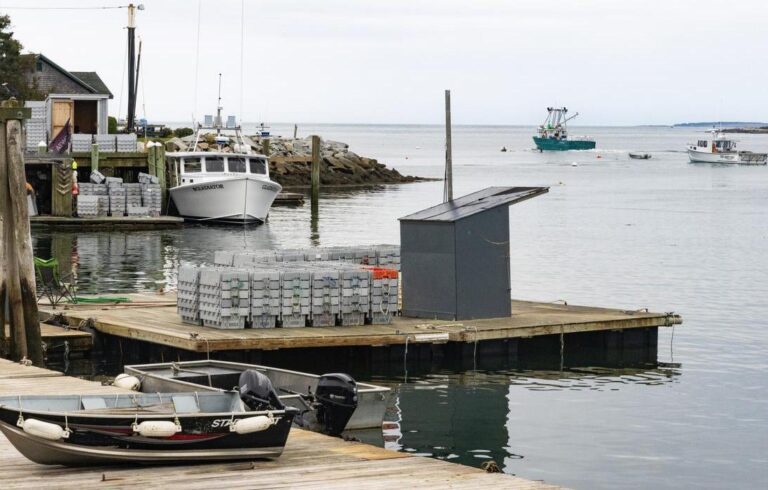On a solo round-the-world sailing race, Kirsten Neuschäfer had a teammate—her boat the Minnehaha. More than a tool, her boat was a partner in a race that takes incredible skill, determination, and a large dose of luck, she explained.
It’s dubbed a race for “those who dare.” Neuschäfer dared and won.
The race website describes it as: “One sailor, one boat facing the great oceans of the world.” The rules call for participants crossing every meridian at least once and the Equator twice; the race must end at the same port where it started and the three great capes—Cape Leeuwin, Cape Horn, and Cape of Good Hope—each must be passed.
Neuschäfer is the first woman to win the race and the only woman to attempt it in 2022.
On Sept. 22, almost a year from the day Neuschäfer, 41, a South African native, began the Golden Globe Race, a near-capacity crowd turned out to the Rockport Opera House to hear her speak.
“Here in Maine is where my participation went from being a hope and a dream to taking shape,” she told the audience.
Boats in the race are built for endurance and the ability to navigate them solo rather than for speed.
The 30,000-nautical mile race is much the same as the original 1968 competition. The 18 racers departed from Les Sables-d’Olonne, France. They rely on celestial navigation and dead reckoning rather than GPS technology, and even their weather reports are faxed from shore-based stations or interpreted from an onboard barometer. A dozen of those solo sailors were unable to complete the course.
“The hardest part was getting to the starting line,” she said. “It wasn’t getting to the finish line.”
While crossing the Indian Ocean, Neuschäfer rescued a fellow competitor—Tapio Lehtinen, whose boat had sunk leaving him adrift for 24 hours adrift in the southern Indian Ocean. She then transferred him to a passing ship and continued to victory in France.
Solar panels and hydro generators are the only new technology required to make the race greener. In all other ways, if it wasn’t available in 1968, it isn’t available to racers in 2022.
But this race isn’t the first time Neuschäfer has dared greatly. At just 22, she biked from Europe back home to South Africa, ending her trip in Cape Agulhas. As she stood at the dividing line between the Indian Ocean and the Atlantic, looking out to sea, she remembers thinking, “What now?”
Lots of people tried to talk her out of the bike trip. When she would ask if they had tried it, or if anyone had tried it, the answer was always no.
Her response was that she wanted to try.

In Rockport, she said, “The next time you have a dream, before anyone dissuades you, see if you can do it.” And that guided her through the race, which was a test of endurance and seamanship. Neuschäfer had built both while delivering yachts around the world.
Sailing with nature documentary film crews made her familiar with the southern oceans. Maine is where her dream started to become a reality with key people helping her find the right partner for the race in the Minnehaha, a 36-foot Cape George built in Port Townsend, Washington.
The pandemic increased the challenges as the borders closed between Neuschäfer in Maine and the boat, which was anchored in Newfoundland. She spent a year in Prince Edward Island repairing and outfitting the boat before sailing it home to South Africa and then back north to France. Before the race even started, Neuschäfer and the Minnehaha were connecting points on the globe.
The boat is heavy by design with a fiberglass hull. Boats in the race are built for endurance and the ability to navigate them solo rather than for speed.
People often ask her how she provisioned the boat for a nine-month sail. As she was making final preparations in France before the start of the race, she was offered almost 100 glass jars full of food.
“Everyone was going to have to take a heavy load, but not everyone was going to have French gourmet food,” she quipped, showing the audience a photo of the glass jars lined up on deck waiting to be stowed. She also took along books as “food for the mind.”
When an audience member asked her if her boat would go in a museum, she replied that the Minnehaha was taking a well-deserved rest, but she is still in good shape and wants to sail.
“Nine months goes by in the blink of an eye.” She said, “I’d do it again for the sailing, but maybe not for the race.”
Proceeds from her Rockport appearance benefited the Camden Area Youth Seamanship Program, a nonprofit that provides sailing and seamanship instruction to kids in the Camden community.





